The major functions of roots absorption of water and minerals from the soil and anchoring the plant in the soil. In addition to these functions, some roots are modified to perform certain specialized functions. Such modifications are called root modifications.
Root modified as Food Storage Organs
- The roots of certain plants are modified for storing reserve food materials.
- Such roots are fleshy, swollen and variously shaped; and are called root tubers.
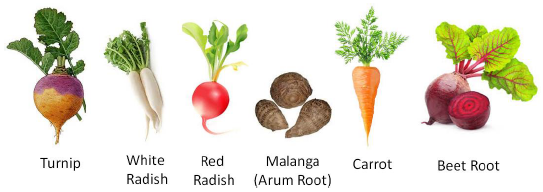
Root modifications for Additional Support
- Stilt roots: They are adventitious roots that arise in clusters from the basal stem nodes just above the ground. (E.g. Maize, Sugarcane etc.)
- Prop roots: In some large trees, massive outgrowths arise from the areal branches. They grow downwards, become large and woody, and develop into columns that support the expanding canopy of the tree. (E.g. Banyan tree)
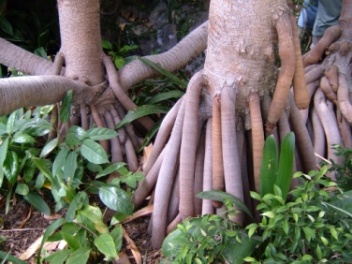
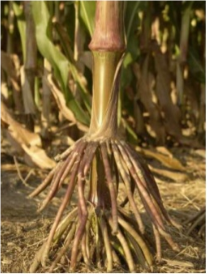

Stilt roots Prop roots
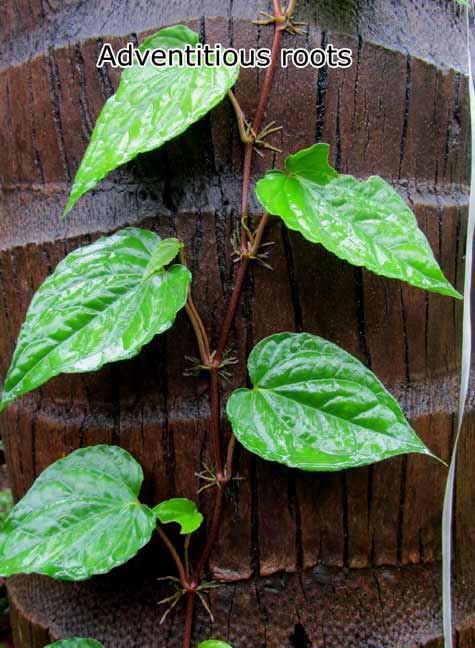
Root modifications for Climbing
- Climbing roots: Climbing plants with weak stem produce adventitious roots from their nodes. These roots help in the attachment of the plant to a solid support.
- Clinging roots: Epiphytes (like Vanda) produce a tuft of roots from the stem to adhere on to the tree branch in which it lives. These are called clinging roots.
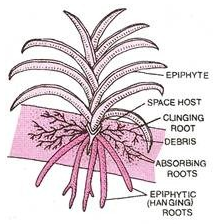
Root modifications for Breathing
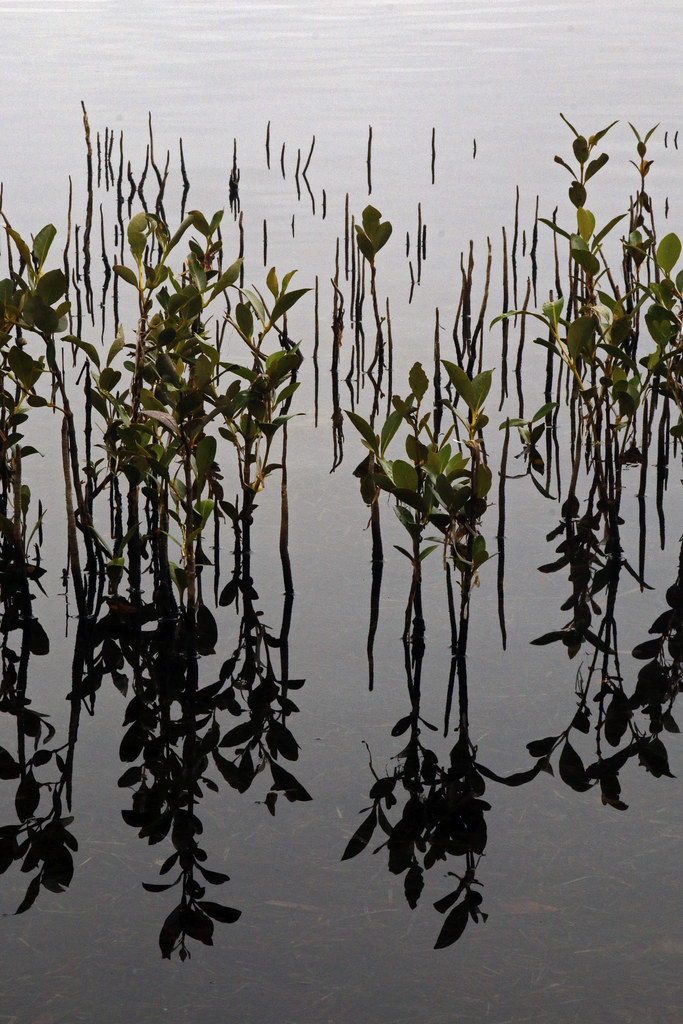
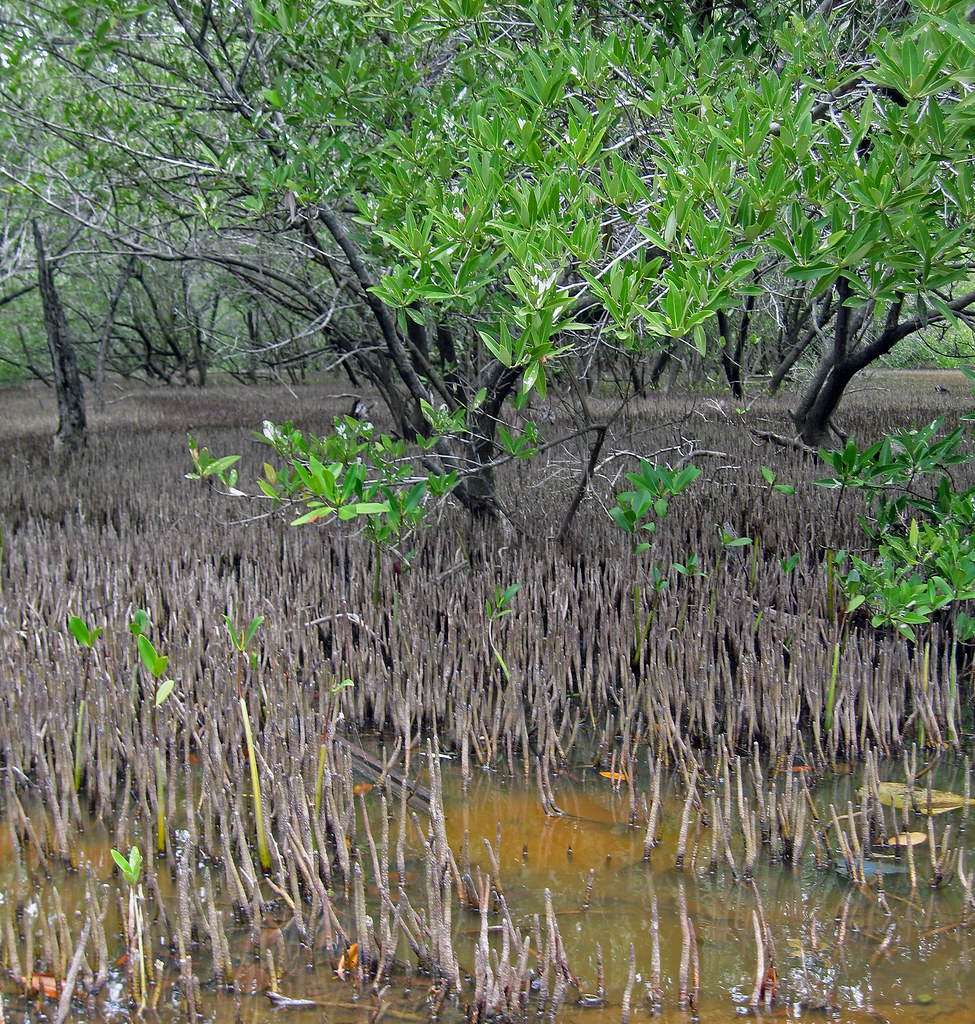
- Breathing roots or pneumatophores are roots through which air can enter into the plant body.
- These roots are usually found in floating hydrophytes and in plants inhabiting salty marshes (such as mangroves). Such places lack oxygen in soil.
- In such conditions, certain roots emerge above the soil surface and helps in respiration.
- Pneumatophores contain minute pores in the surface which helps in the entry of air.
Root modifications for Nutrition
- Haustoria: These are the adventitious roots produced by parasitic plants. They are capable of penetrating into the body of the host plant and can absorb food, water and minerals from the vascular region of host tissues (e.g. Cuscuta)
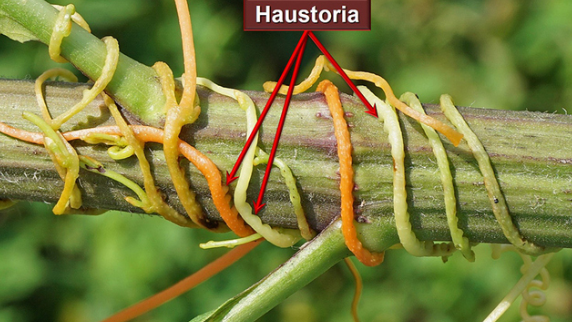
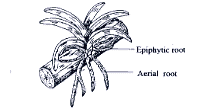
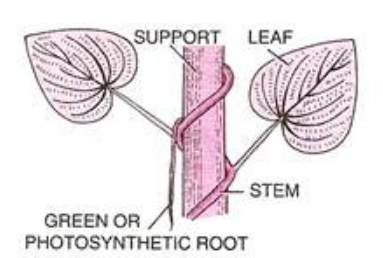
- Velamen root / Epiphytic root: Epiphyes such as Vanda have two types of root – clinging roots and velamen roots. Velamen roots are adventitious roots. Their surface is covered by a specialized spongy tissue called velamen tissue which can absorb moisture from the atmosphere.
- Assimilatory roots / Photosynthetic roots: Certain adventitious roots develop chlorophyll in them, and carry out photosynthesis (e.g. Tinospora).